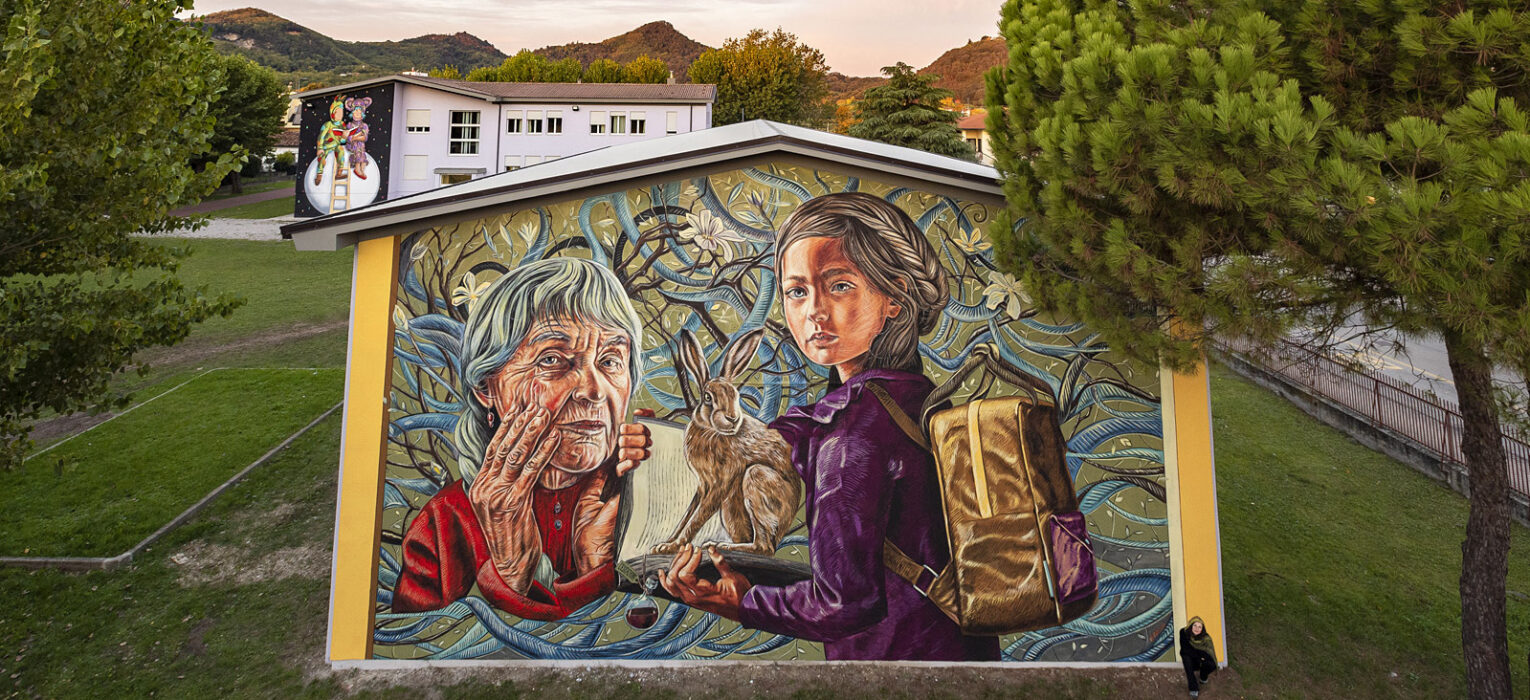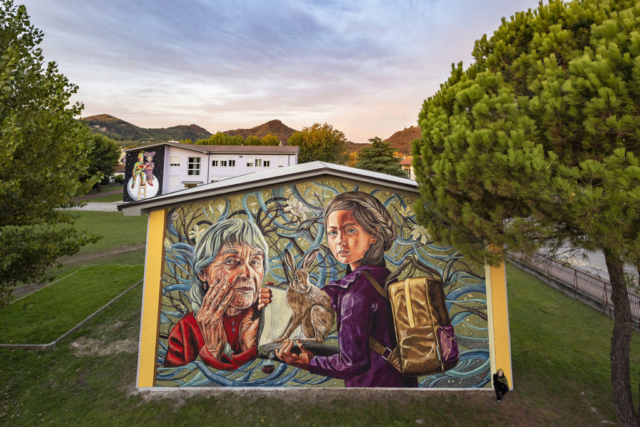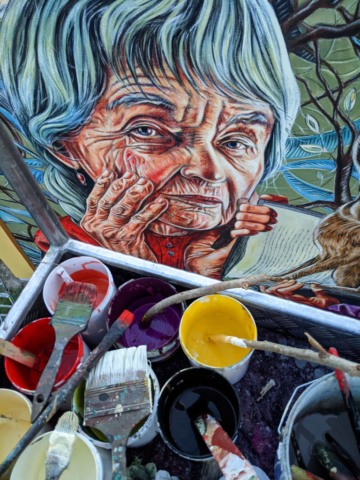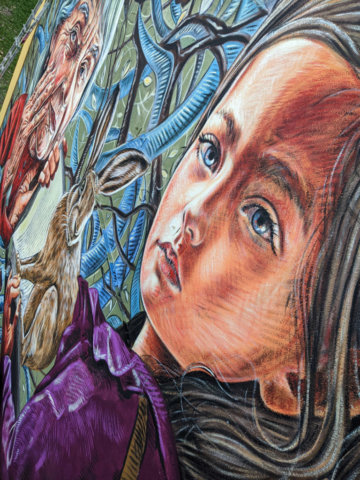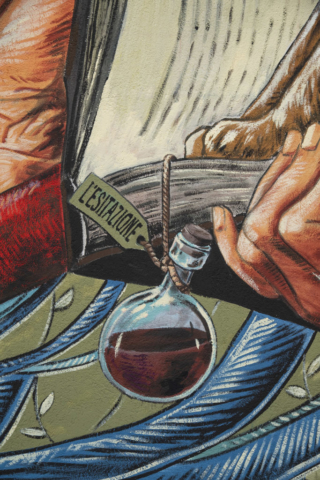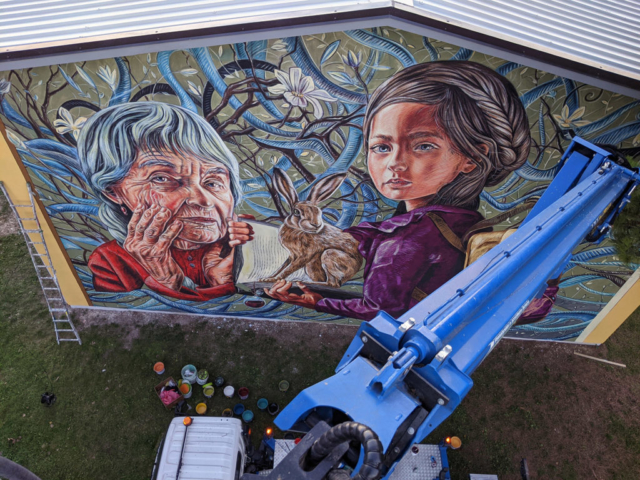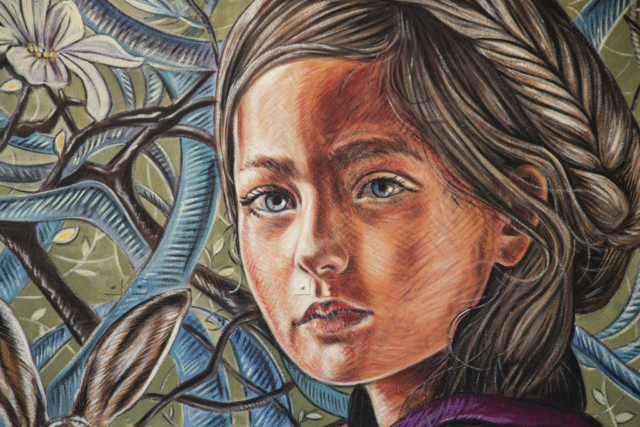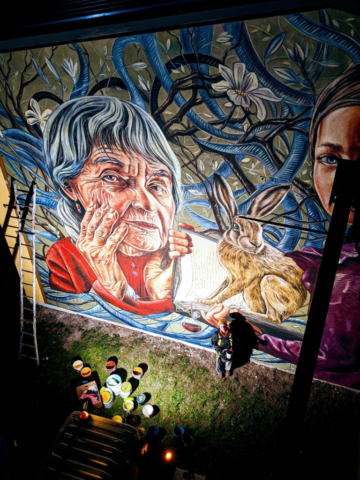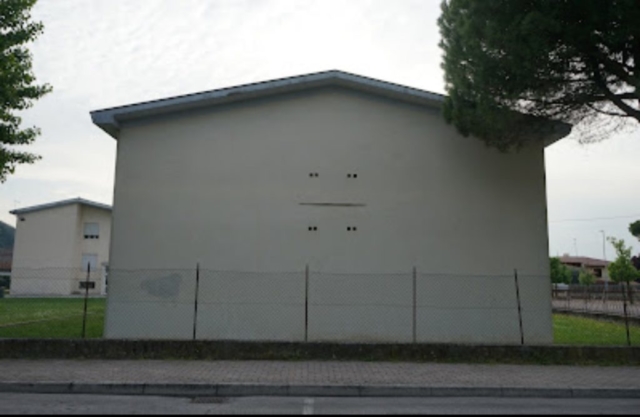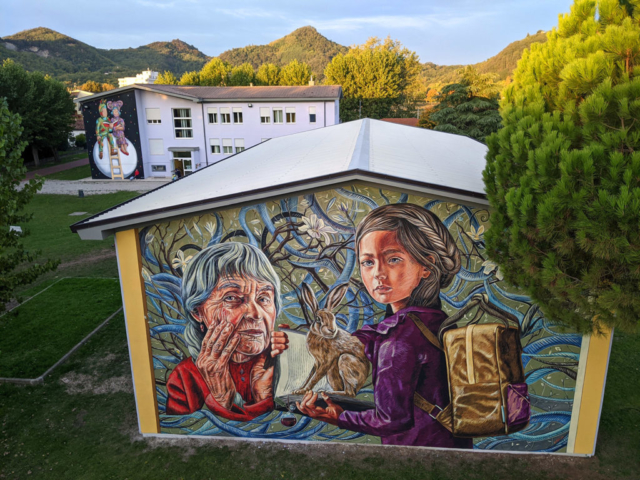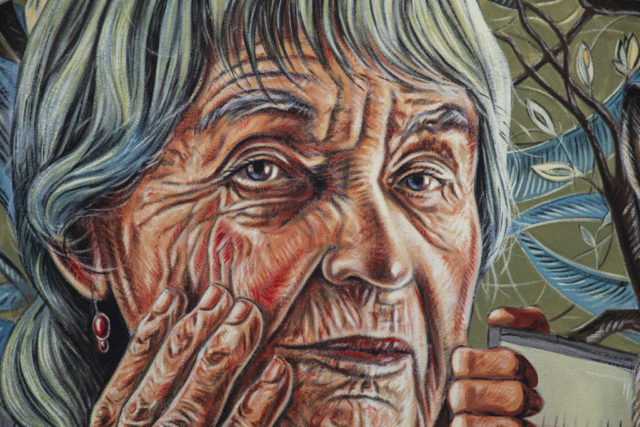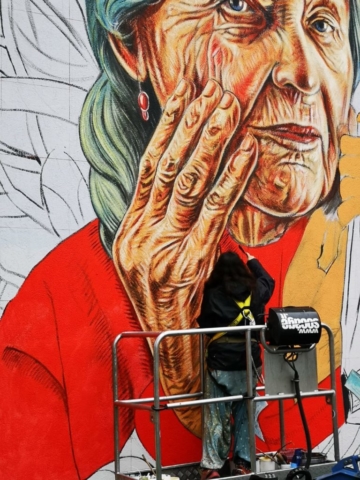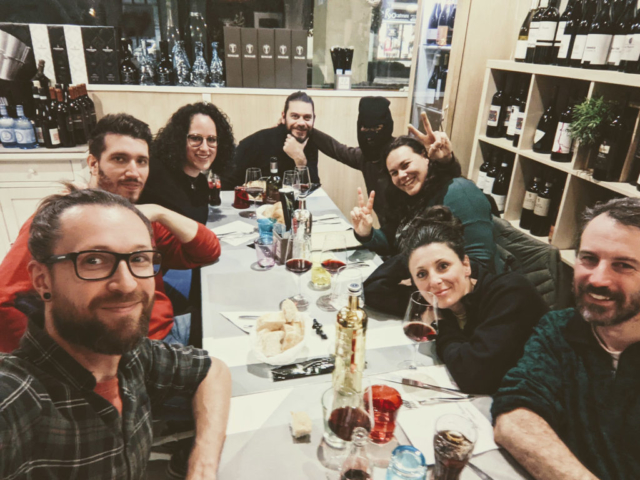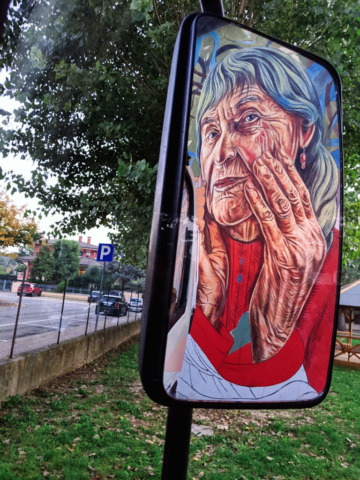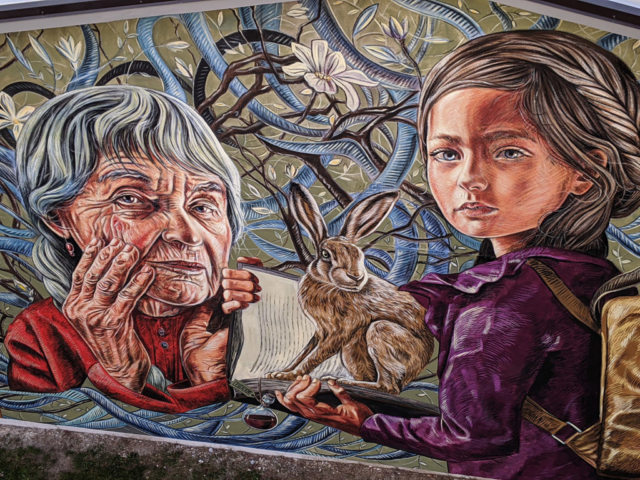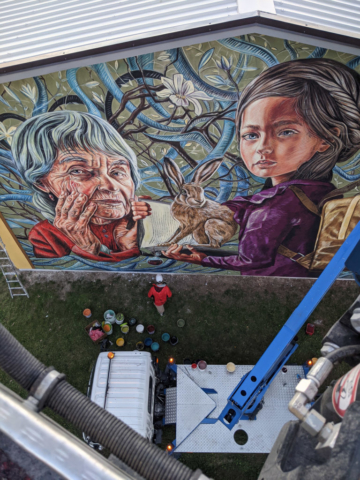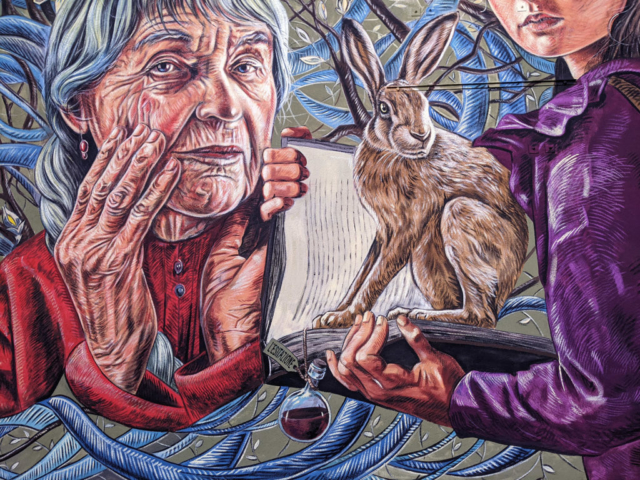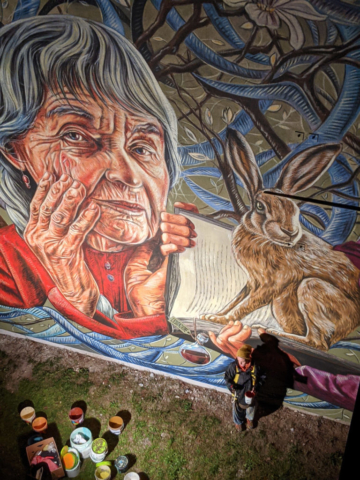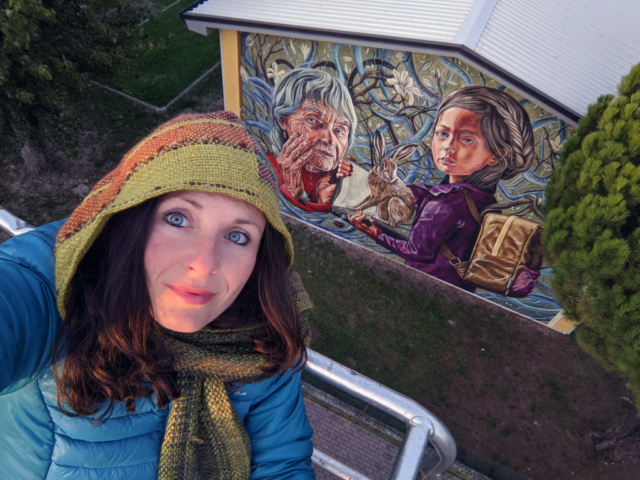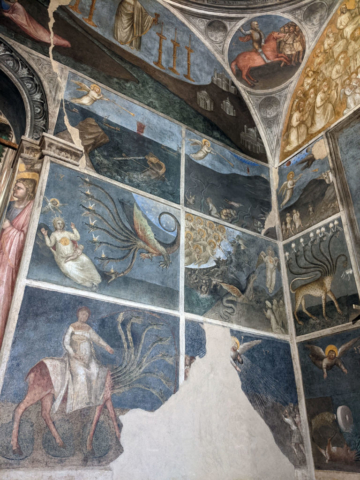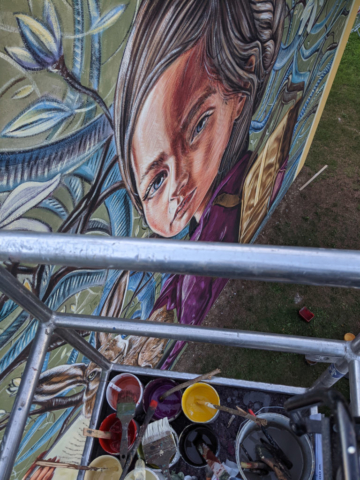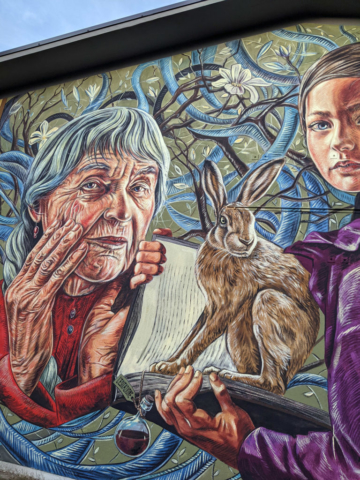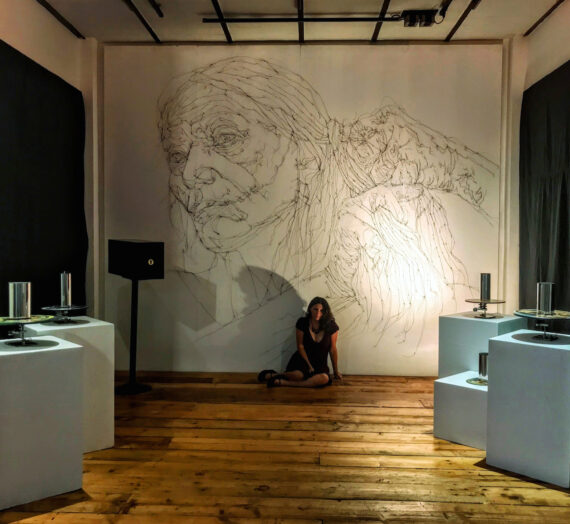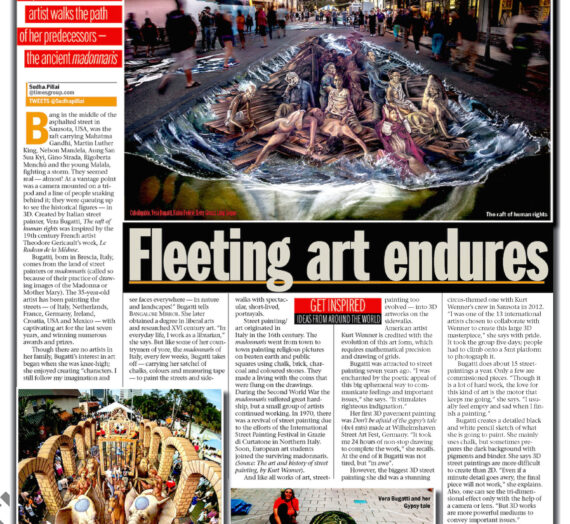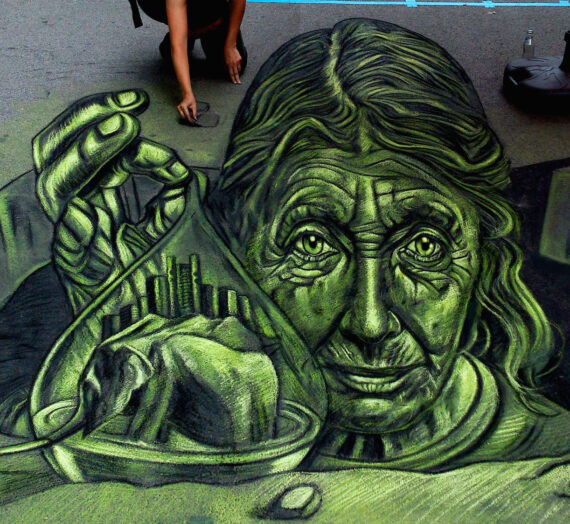“La fiaba è il luogo di tutte le ipotesi: essa ci può dare delle chiavi per entrare nella realtà per strade nuove, può aiutare il bambino a conoscere il mondo.”
G. Rodari, La freccia azzurra
Vi racconto brevemente de L’Esitazione, opera realizzata in ottobre presso la Scuola Primaria I. NIEVO a Montegrotto Terme (PD) all’interno del neonato Linee Guida Urban Festival.
Trattandosi di una scuola avevo pensato di sviluppare il pezzo sui temi dell’educazione e del diritto allo studio, mai scontati e ad oggi per molti bambini (soprattutto bambine) inaccessibili, ma ho voluto trattarli in chiave di scoperta, omettendo volutamente l’approccio di denuncia che a primo acchito avevo deciso di adottare.
Qualche mese prima ero stata contattata da Gianluca Alfieri, dell’Associazione Carrare2.0.
Dopo varie mail di agenzie e richieste commerciali che non avevo nemmeno aperto, il messaggio personale entusiasta e sincero di Gianluca circa un nuovo piccolo festival nel padovano mi aveva subito incuriosita. Finalmente un altro soggetto libero e persone che conoscevano e stimavano il mio lavoro per le sue particolarità. La mia estate era già oberata per non dire soffocata ma avrei potuto andarci dopo la metà di ottobre.
Così il progetto è partito e anche se il primo giorno la piattaforma aveva un guasto (in fondo a me succede ogni volta qualcosa quando inizio, l’alone fantozziano permea sempre agli esordi di un nuovo pezzo, quasi battezzasse epicamente ogni nuova impresa!) ma con l’aiuto del mitico Boogie EAD la sera la mia quadrettatura blu era stata tracciata.
Potevo quindi iniziare il disegno la mattina seguente, nella nebbia e immancabile umidità del bellissimo parco di pioppi secolari. Quella sera ero un po’ agitata e ho fatto fatica a mangiare nonostante il menu del Mamma Perdonami fosse fantastico.
Inauguravo un nuovo forse ultimo progetto dopo un anno di corsa quotidianamente in quota accompagnata da una salute sempre malconcia ed emotività alle stelle.
Tutto era ripartito a doppia velocità ma il malessere covava da tempo in questa testolina sempre in fremito. Così ho passeggiato un po’ in notturna fino a ritirarmi impaurita nella mia camera d’albergo al Vulcania, correndo come sempre lungo il corridoio mentre facevo elenchi al rovescio (chi mi conosce sa perché).
Ma non è tempo per parlare di me, non basterebbe un blog, un anno, Giobbe.
Vi dico piuttosto due cose sull’opera e sul titolo, che ha incuriosito tutti.
Una ragazzina con lo zaino in spalla ci guarda fiera e regge un libro aperto come un bene prezioso. Dal volume si sprigiona un’epifania luminosa di rami, nastri (che paiono tentacoli?) e fiori dalla quale emerge un volto di donna che si tocca il viso con le mani.
Sulle pagine campeggia una lepre smarrita dallo sguardo stupito. Dalle sue zampe penzola una cordicella cui è legata una piccola ampolla contenente un liquido color vinaccia e recante un bigliettino misterioso.
L’opera vuole riferire al mondo della lettura e della fantasia come uno strumento indispensabile per la crescita e il dialogo, interculturale e intergenerazionale.
Vorrei però che fossero i bambini a decidere chi possa rappresentare la donna, se la bambina stessa da anziana, se la nonna, un’antenata oppure una figura venuta dal futuro, se fata, strega, o personificazione di spirito.
Stesso concetto per la lepre, elemento fortemente simbolico in molte culture ma qui liberamente interpretabile dai bambini. Ho scelto un animale totemico considerato ponte fra i mondi. La lepre si palesa all’alba o al tramonto, connette realtà diverse. Quale miglior guida per l’immaginazione?
In questo senso il pezzo vuole essere anche una metafora della letteratura intesa come strumento per cambiare la realtà, per migliorarla.
Ho voluto infatti evocare atmosfere che rimandano a Carroll, Ende, Lewis, Tolkien, Rowling, Pullman, a mondi manichei in lotta. Si pensi al bianconiglio, alla lepre marzolina, ai daimon della Bussola d’oro, al mondo di Narnia. Sarà la fantasia dei bambini a fare il resto.
Il cartellino legato all’ampolla reca una scritta, il titolo dell’opera: “L’ESITAZIONE”.
La scelta è ispirata ad un saggio di Cvetan Todorov del 1970, La letteratura fantastica, uno dei primi studi sul fantastico che mi sono trovata fra le mani (nell’edizione italiana del 1977).
Nel saggio si evidenzia come il fantastico duri soltanto il tempo di un’esitazione, incertezza comune al lettore e al personaggio i quali devono decidere se ciò che percepiscono faccia parte o meno del campo della realtà.
Fantastico è, quindi, ciò che crea un momento di disorientamento all’interno di quelle che sono le leggi della ragione, per poi far scattare i meccanismi della sorpresa o del turbamento.
L’idea era quella di lasciare delle porte aperte o per dirla con Rodari, di indicare la fiaba e la letteratura fantastica in genere come la chiave di tutte le ipotesi!
Una curiosità. Credo mi abbia ispirata, a livello iconografico, la lettura di Ninfee nere di Bussi.
Me ne sono accorta solo a opera terminata, ma è indubbio.
Alla fine ho chiuso il pezzo in tempo anche grazie al solito instancabile Fabio Fedele, che è venuto a trovarmi per tre giorni mettendosi a mia completa disposizione.
Così è rimasto un pomeriggio per tornare a Padova e rivedere gioielli come gli Scrovegni, il Battistero con la serie dedicata all’Apocalisse, la cappella Ovetari.
I ringraziamenti, oltre a Fabio e al dolcissimo Gianluca Alfieri, vanno a Boogie (vi invito a seguire il pezzo che sta creando ora), ristorante Mamma Perdonami, bar BellaVita, hotel Vulcania, Mollonoleggi, Comune di Montegrotto Terme, Paolo Zanettin, Giada, Ilaria.
Le fotografie sono ancora una volta di Andrea Zampatti.
(p.s. La rete davanti all’opera mi ha fatto decidere di fotografarla dall’alto. Pertanto l’immagine è poi stata inclinata per evitare che a livello compositivo si deformasse troppo dato che l’avevo al contrario pensata come vista dal basso).
(And now in English)
“The fairy tale is the place of all hypotheses: it can give us keys to enter reality by new paths, it can help the child to know the world” G. Rodari
I’ll briefly tell you about L’Esitazione, a work created in October at the Primary School in Montegrotto Terme (Padova, Italy) within the newborn Urban Festival Guidelines.
Being a school, I had thought of developing the piece on the themes of education and the right to study, never predictable and today inaccessible to many children (especially girls), but I wanted to treat them in a key of discovery, deliberately omitting the approach of complaint that at first glance I had decided to adopt.
A few months earlier I had been contacted by Gianluca Alfieri, of the Carrare2.0 Association. After several emails from agencies and commercial requests that I hadn’t even opened, Gianluca’s enthusiastic and sincere personal message about a new small festival in the Padua area immediately intrigued me.
Another free subject and people who knew and appreciated my work for its peculiarities. My summer was already overburdened not to say suffocated but I could have gone after mid-October.
So, the project started and even if the first day the platform had a breakdown (after all something happens to me every time when I start, the unlucky halo always permeates at the beginning of a new piece, almost epically baptizing every new enterprise!) with the help of the legendary Boogie EAD in the evening my blue grid had been drawn.
I could then begin the drawing the following morning, in the fog and inevitable humidity of the beautiful park of centuries-old poplars. That evening I was a bit agitated and I struggled to eat.
I was inaugurating a new perhaps last project after a year of running daily at high altitude accompanied by an always battered health and skyrocketing emotions. Everything had restarted at double speed but the malaise had been smoldering for a long time in this little head, always quivering.
That’s why I strolled for a while at night until I retreated frightened to my hotel room at Vulcania, running as always along the corridor while making upside-down lists (who knows me knows why).
But it’s not time to talk about me, a blog would not be enough, a year, Job. I would rather tell you two things about the work and the title, which intrigued everyone.
A little girl with a backpack on her shoulder looks at us proudly and holds an open book like a precious asset. The volume releases a luminous epiphany of branches, ribbons (which look like tentacles?) and flowers from which emerges a woman’s face touching her face with her hands. On the pages stands a lost hare with an astonished look. A cord hangs from her paws to which a small ampoule containing a grape-colored liquid is tied and bearing a mysterious note.
The work wants to refer to the world of reading and imagination as an indispensable tool for growth and dialogue, intercultural and intergenerational. However, I would like the children to decide who can represent the woman, whether the child herself as an elderly person, whether the grandmother, an ancestor or a figure from the future, whether a fairy, a witch, or personification of spirit.
Same concept for the hare, a highly symbolic element in many cultures but here freely interpretable by children. I chose a totemic animal considered a bridge between worlds. The hare reveals itself at sunrise or sunset, it connects different realities.
What better guide for the imagination? In this sense, the piece also wants to be a metaphor for literature intended as a tool to change reality, to improve it. In fact, I wanted to evoke atmospheres that refer to Carroll, Ende, Lewis, Tolkien, Rowling, Pullman, to Manichean worlds in struggle. Think of the white rabbit, the March hare, the daemons of the Golden Compass, the world of Narnia. The children’s imagination will do the rest.
The tag attached to the ampoule bears an inscription, the title of the work: “HESITATION”.
The choice is inspired by a 1970 essay by Cvetan Todorov, The fantastic literature, one of the first studies on the fantastic that I found in my hands (in the 1977 Italian edition). The essay highlights how the fantastic only lasts for the time of hesitation, an uncertainty common to the reader and the character who must decide whether or not what they perceive is part of the field of reality.
Fantastic is, therefore, what creates a moment of disorientation within the laws of reason, and then triggers the mechanisms of surprise or disturbance.
The idea was to leave doors open or to use Rodari’s words, to indicate the fairy tale and fantastic literature in general as the key to all hypotheses!
A curiosity. I think I was inspired, on an iconographic level, by reading Bussi’s Black Water Lilies. I only noticed it when the work was finished, but there is no doubt.
In the end I closed the piece in time also thanks to the usual tireless Fabio Fedele, who came to see me for three days and put himself at my complete disposal.
I had the time to go to Padua and see jewels such as the Scrovegni, the Baptistery with the series dedicated to the Apocalypse, the Ovetari chapel.
The photographs are once again by Andrea Zampatti.
(The net in front of the work made me decide to photograph it from above. Therefore, the image was then tilted to prevent it from deforming too much at a compositional level since I had, on the contrary, thought of it as seen from below).
